Benefits of living on campus
From nationally-ranked dorms to a range of resources, living on campus is a once-in-a-lifetime opportunity
Michelle Tran, Writing Major
One of the distinguishing aspects of the Loyola student experience is living on campus. Loyola has been ranked the No. 1 Campus in Maryland—and among the Best College Campuses in America—by Niche.
More than 80% of students live in Loyola’s housing through their senior year—which is unique for any school, but especially for one with an urban campus.
There's a reason Greyhounds greet fellow Greyhounds to campus by saying, Welcome home!
Actually, there are many reasons—and today I’m sharing seven.
1
The incredible housing
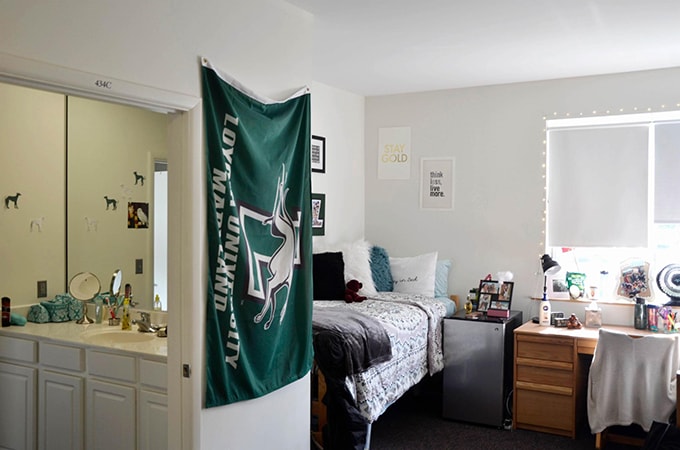


One of the best things about living on campus is the housing. The residence halls at Loyola University Maryland were ranked in the top 20 by the Princeton Review in its national list of Best College Dorms for more than a decade. Loyola is also recognized for having some of the Best College Dorms in America by Niche in its national rankings.
Loyola’s 17 residence halls are comfortable and spacious while still providing a sense of community. They are fully furnished with all the amenities. They have heating and air conditioning (and as any student knows, AC is a must in Baltimore in August/September and even late April/early May!). There are laundry facilities in every building, vending machines to fuel late-night study sessions, and computer labs where you can easily print a term paper for class. There are common rooms and recreation areas and study labs and study spaces, in case you need a change of scene or a place to meet for a group project or a cup of coffee with a friend that isn’t your own apartment.
And through your time at Loyola, almost all students live in several types of housing—from double-room to apartment style (with a private bathroom and kitchen)—which is great.
2
Convenience
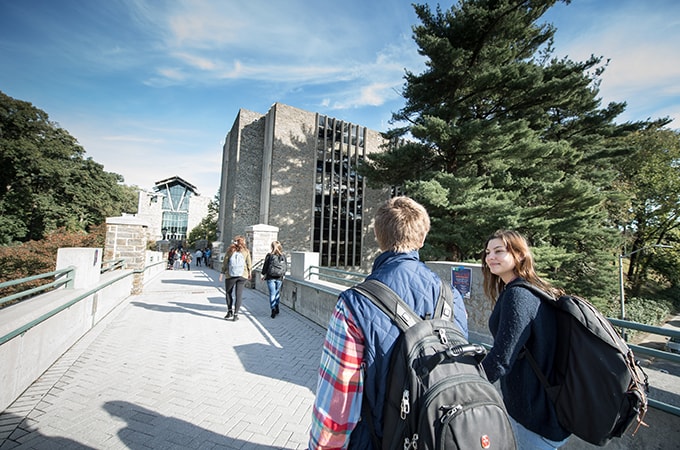

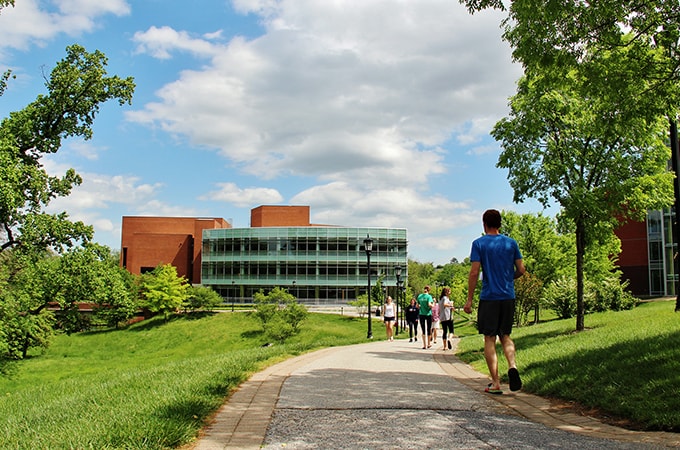
This is one of the biggest advantages to living on a small, walkable campus. While the Evergreen campus is located in a city, most of the places students go during the week (classes, athletic events, campus activities, the Fitness & Aquatic Center (FAC), on-campus jobs, the library, dining areas) are all really convenient.
One trip to visit a friend at a big state school and you’ll realize how good Greyhounds have it… If you oversleep and are running late, you can run to class with a granola bar in hand when you live so close to the academic buildings where your classes are held!
It’s so much easier to attend evening events and club meetings and sports practices when you don’t have to deal with leaving campus and coming back at night—or bringing all your stuff for class and any other activities for the entire day. When you live on campus, you can easily swing home to change for practice or eat dinner before a meeting or a group project, or just pop into the Counseling Center or the Study or the Writing Center as you need to.
Living off-campus comes with many unpredictable factors: maybe your car won’t start or there’s traffic or you can’t find parking (parking is a real problem for a city campus and tends to rear its ugly head on the day of a final exam). Eliminate all those factors with the convenience of living on campus. And shuttles run frequently if you have too many things to carry or can’t get to a building on foot or it’s raining.
Loyola’s office of Disability and Accessibility Services works with students directly who need accommodations to get from their residence halls to other areas of campus, and no one-way trip is ever more than 10 minutes or so.
3
Your neighbors are also college students
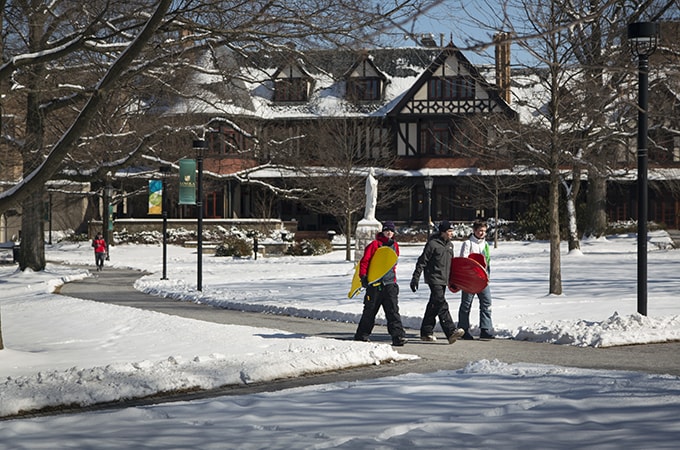
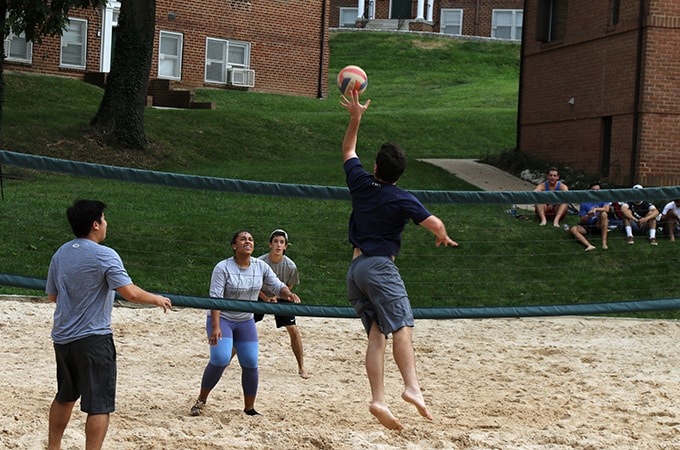
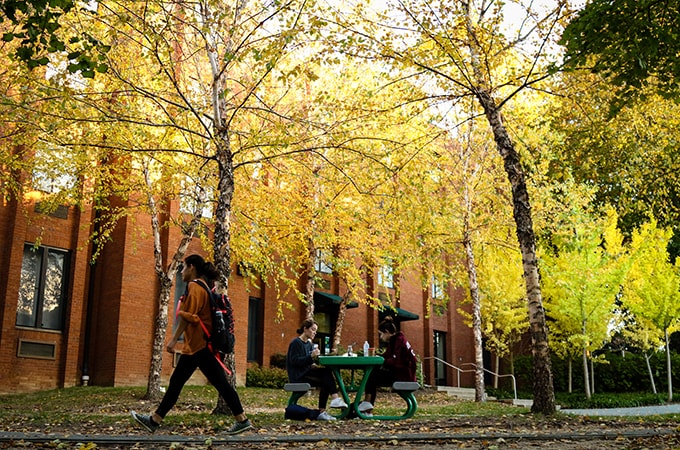
There’s a great sense of community when you’re living and learning with other students. You have neighbors you can ask about campus events or classes or things to do in Baltimore—or to borrow a textbook or a frying pan.
Living in campus housing means you’re living with and in a diverse community of people in the same stage of life as you. People hardly mind that your windows are open on a warm day and there’s music filtering out, because there aren’t babies napping or older neighbors you might be bothering. Instead, you might walk outside to find neighbors throwing a Frisbee around or playing beach volleyball on the courts on the West Side of campus—and they’ll invite you to join them.
You can (and will) bond with other students in a way that only living on a college campus promotes, which is especially great for first-year students seeking to make friends for the next four years. You’ll be exposed to different cultures, opinions, styles, music, food, hobbies, and interests in a way that only comes from living with your peers in close communion.
4
Resident Assistants are an amazing, built-in resource
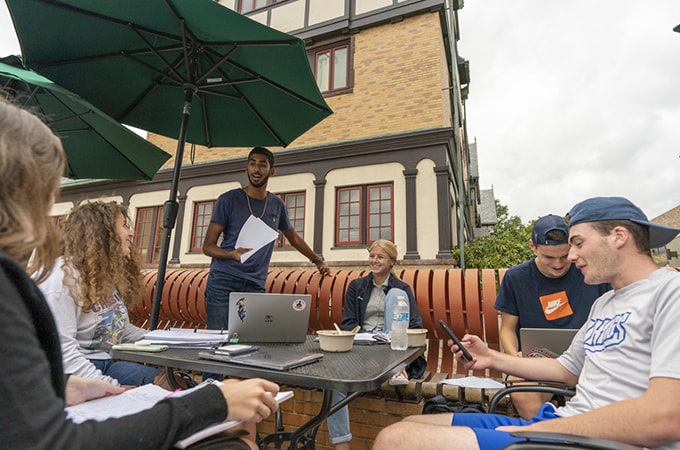
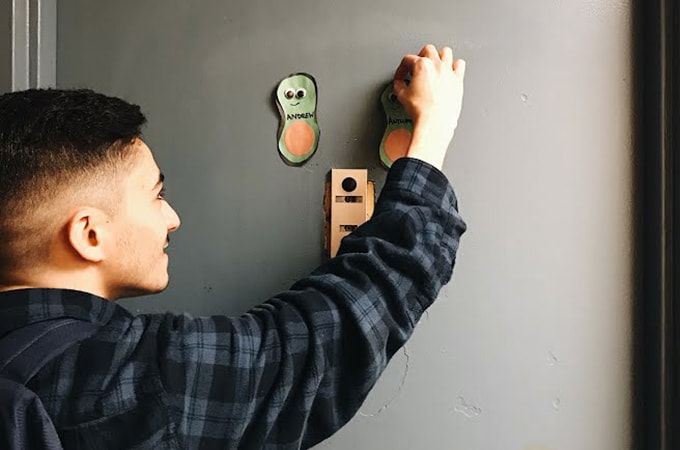
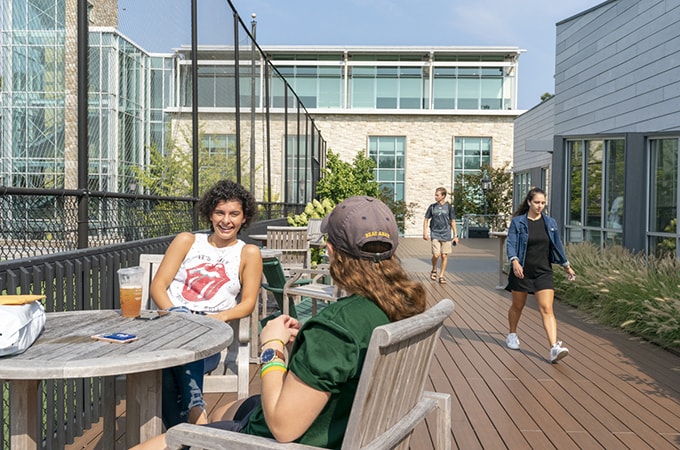
There’s no doubt that it can be difficult living with people, even if they are your best friends. Your Resident Assistants are trained to support their residents and to help mediate any difficult situation. If you really can’t come up with a solution and need to move, it’s easy to transition to another living space on campus. You don’t have to worry about breaking a lease or finding a place to live if things aren’t reconcilable. Beyond conflicts, RAs have a wealth of knowledge about campus, student life, activities and events and special interest programs and clubs, and the City of Baltimore. They’re also just happy to chat about life and classes and your experiences at Loyola. Take advantage of them!
5
You won’t go hungry
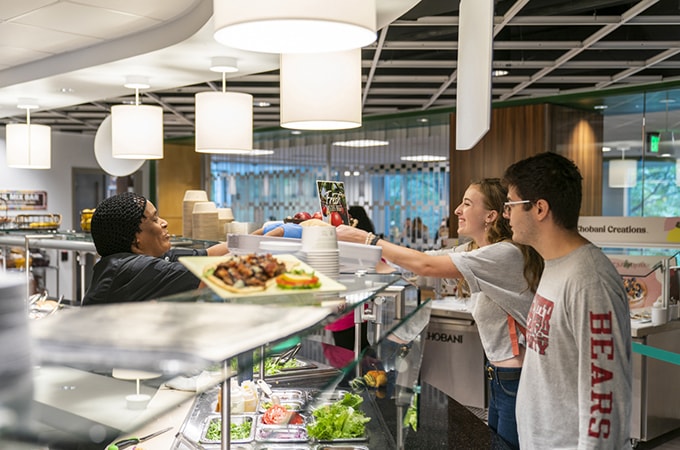

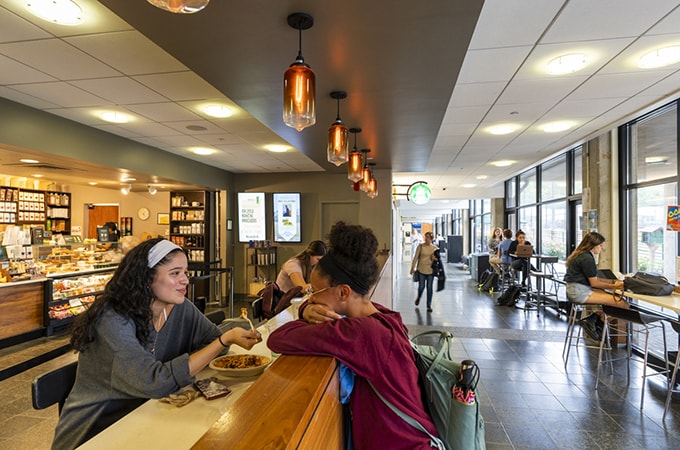
All college students know this to be true: proximity to food is paramount! Many Loyola students can get breakfast, lunch, and dinner without leaving their building. For others, your next meal is a short walk (with friends) away.
Iggy’s Market and Just Walk Out Express Stores are great for late night snacks or meals, and Fresh West offers smoothies and acai bowls before changing over to a different menu featuring tacos, burritos, and salad bowls at night. Loyola just opened the first Amazon Just Walk Out store on a college campus in the State of Maryland (pretty cool) in Bowman Express.
It’s also important to note that Greyhounds are no strangers to the kitchen. That’s because all first-year residence halls provide common kitchen areas—and from sophomore year on, all students have a private kitchen in their suite, apartment, or townhouse. Roommates and floormates can swap recipes and prepare and enjoy meals together—just another reason campus housing feels like a true home away from home.
Can’t find what you’re craving on campus? Loyola’s residence halls are in walking distance to local restaurants like Miss Shirley’s Café for brunch, Roland Park Bagels, Namaste Baltimore for local Indian cuisine, Alonso’s for a burger or pizza, and Smoothie King. And of course, Baltimore has an incredible food scene that Greyhounds take advantage of—ranked in the Top 10 Food Cities in the country by Yelp!
6
For perhaps the only time in your adult life, everything is included


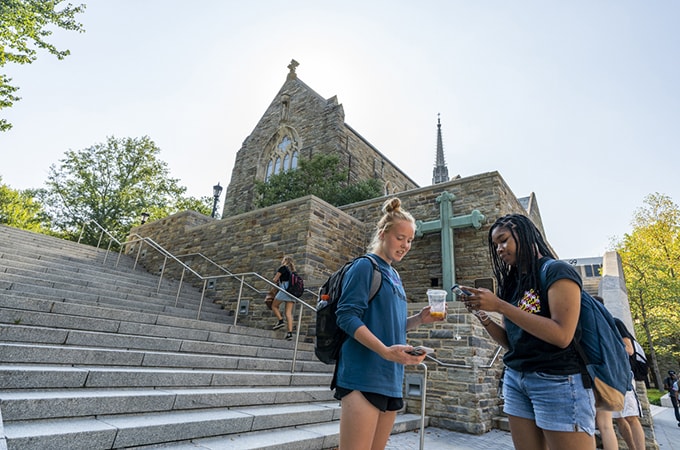
Students who live on campus don’t have to worry about setting up or managing or paying for utility bills, Internet, cable, water, or gas. All maintenance, utilities, Internet, and Xfinity On Campus are included in student housing. Another thing to consider is security. Loyola Public Safety takes care of our campus, but each residence hall also has a desk assistant and security monitoring guests and with the residents safety and well-being in mind.
Access to wellness is also included: mental, spiritual, and physical (cura personalis at its best). You’re a walk (or short shuttle ride) away from a visit to Loyola’s Student Health Center, Women’s Center, and Counseling Center, or to participate in faith and worship services on weekdays and weekends. Your membership to the FAC is included in your tuition. The convenience of the gym is a motivating factor to join an intramural team or put on your workout gear and run the indoor track, attend a (free!) spin class, even sign up for a personal trainer. If you feel like getting some fresh air, there are trails and city parks adjacent to campus.
7
It’s a once-in-a-lifetime experience
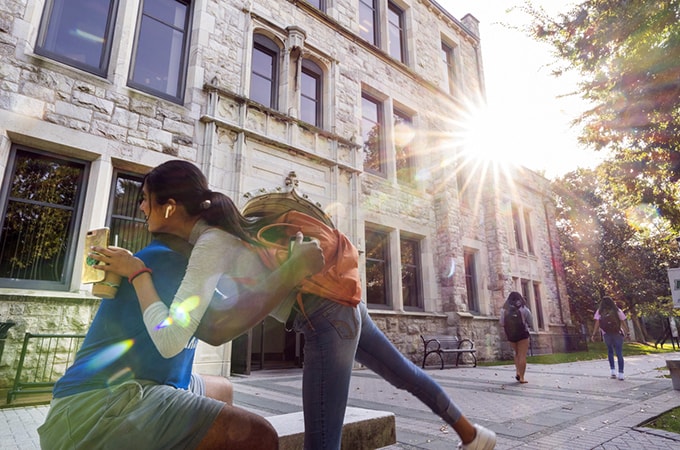
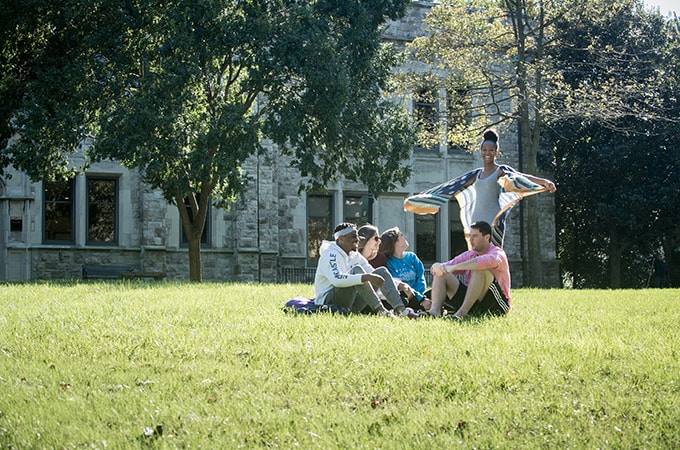

College is the only time in life where you and your closest friends will all live within a one-mile radius of one another. Living on campus means popping across the hall to hang out with your neighbors or spontaneously deciding to sleep over at your friend’s room. It means you’ll see familiar faces every day as you walk across the Quad—and your day could take a completely different shape than you thought it would, as you make plans on the fly. Living on campus allows you to live in the moment. And while four years can feel like a long time, it’s actually just that: a wonderful moment. Living on campus allows you to be present for all of it.